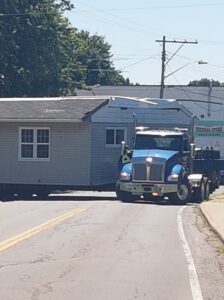Relocating a Building


Relocating Buildings, homes, cottages, garages, portable classrooms
Relocating a home offers several benefits, including:
Preservation of Historic Properties: Moving historic homes to a new location can save them from demolition, preserving architectural heritage and cultural significance.
Avoiding Demolition Costs: Instead of demolishing a home, relocating it can be a cost-effective alternative, saving money on demolition expenses and landfill fees.
Adapting to Changing Environments: Relocating a home allows homeowners to adapt to changing environmental conditions, such as rising sea levels or urban development, by moving to a safer or more desirable location.
Maximizing Land Use: Moving a home to a new location can optimize land use by freeing up space for new development or landscaping on the original property.
Personalization and Customization: Relocating a home provides an opportunity to customize and personalize the new location according to the homeowner’s preferences, such as adding landscaping or building additional structures.
Saving Energy and Resources: Moving an existing home reduces the need for new construction materials and energy consumption associated with building a new home, contributing to sustainability and environmental conservation.
Preserving Memories and Sentimental Value: For homeowners with emotional attachments to their homes, relocation allows them to retain the memories and sentimental value associated with the property in a new location.
Financial Savings: In some cases, relocating a home can be more cost-effective than building a new one, especially if the existing home is structurally sound and meets the homeowner’s needs after relocation.
Overall, relocating a home offers a range of benefits, from preserving historic properties to providing cost-effective solutions for homeowners facing changing circumstances or environmental challenges
